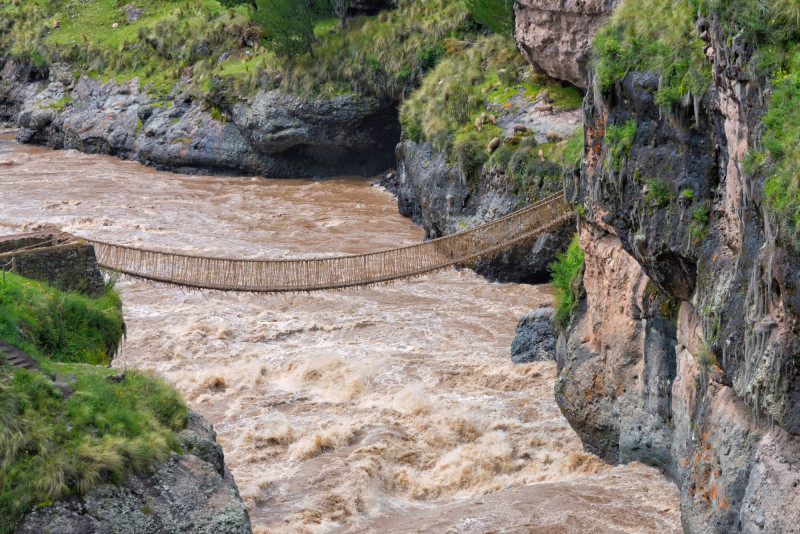The indigenous people of the area keep the ancient tradition and techniques of the Incas alive by “weaving” the bridge every year
Almost 500 years after the collapse of the largest empire in Latin America, Peru has only one bridge left from the Inca’s extraordinary road system – which is still used today by the locals.
Standing 22 meters above the Apurímac River, near the 500-person village of Huinchiri in Peru’s southern highlands, the Queshuachaca Bridge is rewoven each year from ropes of local grass to serve the region’s few mountain dwellers – and daring tourists – to cross the street.
Although there is a modern bridge nearby, local residents keep alive the ancient tradition and techniques of the Incas, renewing the bridge every year in the second week of June
Families from the nearby indigenous communities of Chaupibanda, Choccayhua, Huinchiri and Collana Quehue, gather in celebration and – each having prepared ropes of grass and ‘mats’ to step on, all work together for the annual and very dangerous ‘weaving’ of the bridge .
In the past, according to the BBC, each Inca bridge was overseen by a “bridge master,” who was responsible for guarding and repairing it. Today, Queshuachaca is overseen by the last living descendant of the Inca bridgeheads: Arizapana.
“Trust yourself, have faith in God and don’t look down” is the advice his father gave to Arizapana, who takes part in the dangerous process every year.
One of the keys to the rapid expansion of the Incas was an excellent road network of roads used for communication, trade and military campaigns known as Qhapaq Ñan (The Royal Road) which covered almost 40,000 km.
The Royal Inca Road ran from Quito, Ecuador to and beyond Santiago, Chile, in two main north-south arteries, along with more than 20 smaller routes that ran east to west like a giant staircase.
Today, almost 500 years after the fall of the Inca Empire, only one bridge of the Royal Road remains: the one over the Apurimac River.
Source :Skai
I am Frederick Tuttle, who works in 247 News Agency as an author and mostly cover entertainment news. I have worked in this industry for 10 years and have gained a lot of experience. I am a very hard worker and always strive to get the best out of my work. I am also very passionate about my work and always try to keep up with the latest news and trends.












